Creating high quality content is a highly important aspect, not only for gaining high ranks but firstly for making users or readers happy. Yet, we all know that running a blog with constant valuable and high quality content might sometimes be difficult as it is a resource-consuming process.
Therefore, why not getting the best out of the content that you’ve already worked on?
You sometimes don’t want (or don’t have the means) to reinvent the wheel every time you create a new piece of content. Therefore, why not getting the best out of the content that you’ve already worked on?
All you need to do is repurpose the content you already have. Not only will you save resources, but you’ll also extend the reach of your blog and maybe find new ways to reach your audience.

Finding the proper ways to repurpose content could sometimes be a challenge. This is why we’ve put together a great list of the best ways to repurpose content. Different tactics match different people. Therefore, read them all and choose the ones that fit you best. You have a lot to choose from:
- Convert Your Old Blog Posts Into Hands On Guides
- Turn Your Already Published Content into Podcasts
- Make Use of Your Internal Data and Put It Together into Case Studies
- Gather All Your Interviews into an Expert Advice E-book
- Transform the Quora Q&A into Valuable Blog Post
- Share Your Statistics Through Twitter Posts
- Update Your Old Posts with New Information
- Create New Blog Posts and Articles from Spinoffs
- Create A Slide Deck & Upload To SlideShare to Reach New Audience
- Build an Infographic to Make the Best Out of Your Old Content
- Put Your Current Content Together Into an E-book
- Write Guest Posts on Topics You Already Have Expertise On
- Promote Your Existing Blog Posts from Multiple Points of View
- Turn Your Existing Content into Videos
- Conduct Podcasts with Industry Leaders Following Themes You Are Already Familiar with
- Compile Your Clients’ Questions from Support into an FAQ Page
- Pull out the Best Questions You Get on Support and Turn Them into Individual Blog Posts
- Convert the Testimonials from your Users into Quality Content
- Make Use of Your Clients’ Photos or Videos Using Your Product
- Mix Your Blog Posts Into Valuable Online Courses
- Share the Best of Your Content via a Newsletter
- Pull out Quotes as Micro Content Promotable to Your Target Audiences
- Break up Long Articles into a Series of Shorter Blog Posts
- Have Your Content Syndicated and Win Quality Traffic and Authority
- Build and Share Instructographic to Reach New Audience
- Transform Your Content into Valuable Email Series
- Turn Your Blog Post into a Webinar ( and vice-versa)
1. Convert Your Old Blog Posts Into Hands On Guides
After having written about topics in the same field for a while, you eventually start to amass enough information and expertise to be able to train someone in the field (at least at a basic level). That’s true of all fields, not just SEO (think cooking, programming, DIY etc.) So why not put all that knowledge to use and create a guide on how to do something by collating parcels of valuable information you’ve distributed across many posts over time into one neat, organized, easy to follow user guide? Manuals, if written and edited in a clear and intuitive form, can have a very high re-reading value, as they are useful both as a beginner’s lecture as well as a reference book later on.

2. Turn Your Already Published Content into Podcasts
People still like to listen to other people talking. They just don’t want to tune in at a certain hour to be able to do it. So podcasts are really the TiVo version of radio shows: they can be quite entertaining and/or enlightening, don’t require you to be active and can be “digested” any time you choose to . That last factor really hits a sweet spot in terms of convenience and accessibility: how many articles/videos can you read/watch while driving, running or doing house chores? The serial form also helps introduce new avenues and experiment with content and form, as long as you manage to ensure a certain level of technical quality. Even if some attempts might fail, listeners usually come back to a Podcast they like, once the initial attraction has been established (just like a TV show, not all episodes are going to be great, but you’ll always tune in to watch the show).

3. Make Use of Your Internal Data and Put It Together into Case Studies
If you like churning out copious amounts of data in the hope of finding useful trends that might inform your choices, there’s re-use value in analyzing those data. Of course, you might be more interested in the quantitative aspect, but there’s plenty to learn (especially for others) from a more qualitative approach. Trying to understand why something happened in terms of cause and effect can be very rewarding and it is an intriguing mental exercise, both for you, as the person behind the analysis, and for the reader, as a virtual Dr. Watson. A good case study is less rigorous than a study, but also more demanding from a creative stand point and if done right, it can get you an equal amount of fame.
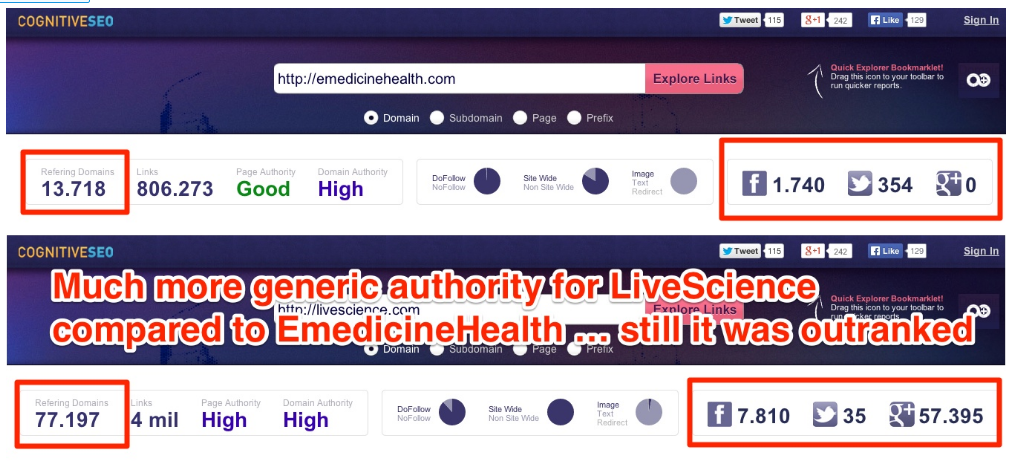
4. Gather All Your Interviews into an Expert Advice E-book
If you end up doing enough interviews on a topic, you could try to compile them all into an expert advice e-book. There’s plenty of advantages to an e-book alone (more on that below), but there are some specific advantages of expert advice e-books. For starters, there’s not that many of them; even the first pages of a Google Search don’t turn up that many relevant results , which is not the case for most of the other examples in this list. The reason might be that it’s hard enough to get one piece of expert advice, let alone get enough of it to publish a book. There’s also the advantage of not having to come up with content on your own (though you still have to make the interviews happen). On top of that, when the advice is coming from a variety of recognized experts, there’s a higher chance people will find it more relevant or more persuasive than if it came from a single source. Of course, you’ll still have some input in terms of structure, design and segueing the different sections of the book into one coherent story and that might be exactly what makes it possible to publish that content as an e-book, as opposed to letting it linger scattered throughout various pages on your website.
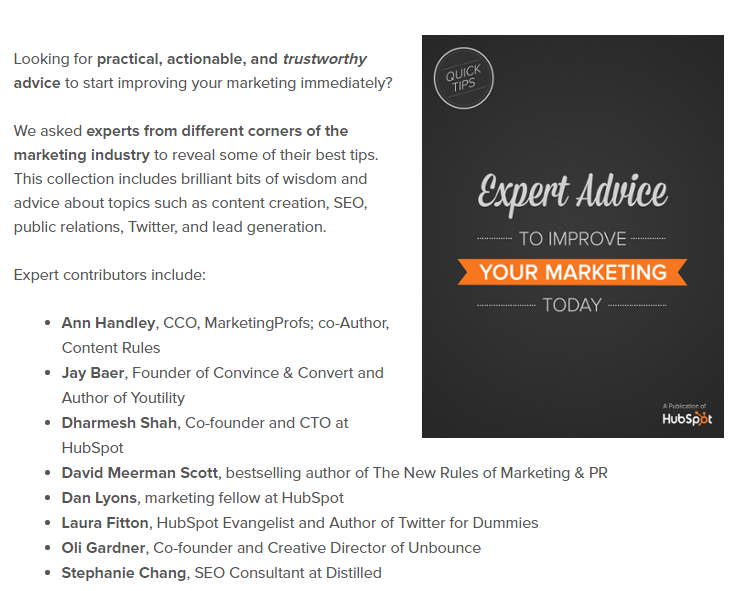
5. Transform the Quora Q&A into Valuable Blog Post
There’s value in having your post read, commented upon and shared with others. But there’s also value in opening up your content for a full and unforgiving debate. Which is what is likely to happen if you were to post some of your ideas as an answer to someone on Quora. Or if you were to use your content to stir up a discussion on a Reddit thread. Even though these two examples are quite different in a lot of respects (starting with the type of platform they represent), what they have in common is :
(1) a significant amount of experts who contribute to the platform (more visibly so on Quora, but present on Reddit as well) and
(2) sets of involved core contributors and a strong sense of ethics .
So, while the reward might not always be an easy win, you can be sure that it will be the result of serious consideration and much exposure of your content and yourself.

6. Share Your Statistics Through Twitter Posts
Micro-blogging (as Twitter is usually defined) is all about saying a lot with very few words (multum in parvo, as the Latins would put it). Of course, brevity (or conciseness) can also be achieved through images (to follow another old adage) and that’s where things can really take off. The same information can be presented in a myriad ways with a different impact every time. When it comes to “share-ability”, nothing beats a well-designed statistic. Besides, a well-made infographic is not just eye-candy, but also a valuable educational tool.
7. Update Your Old Posts with New Information
Your content should be a “living” thing, as much as possible. It partially means that, as you get a clearer or more complete view of reality, you update previous posts with the newfound knowledge.
It’s not about recycling, as it is about bringing things back into relevance, with a new, more insightful look at them. Just as you initially thought a certain SEO tactic was good and useful, others may have believed the same. So coming back now, after additional research, and proposing a more nuanced approach, could help others as well. It might also help people who are new to the discussion and didn’t have a chance to witness the original post and the comments around it.
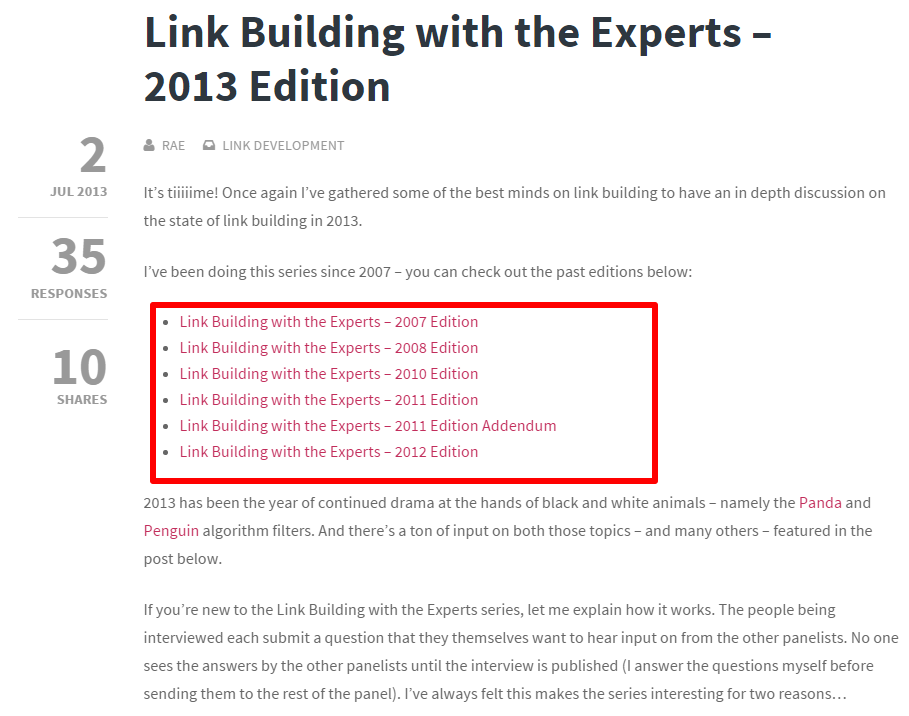
8. Create New Blog Posts and Articles from Spinoffs
Once you’ve tackled a subject, it doesn’t mean it’s a done deal. Innovation is rife in every field, particularly technological ones, so what you found to be true last year might not apply anymore (or what you found to be true last month for that matter). So much like in Hollywood, sequels are a likely occurrence. There are many reasons why a follow-up article might be relevant: something has changed and there are now more reasons to do (or not do) something, or more ways of doing it; you’ve interacted with readers and industry experts in the meantime and discussed the topic, finding out that there are more worthy items for your list than you could have thought of initially; one secondary “character” in your original article has now suddenly become more relevant and can be the protagonist of their own article or blog post, etc. Whatever the case might be, seize the opportunity and expand your article pool, just like the example below.
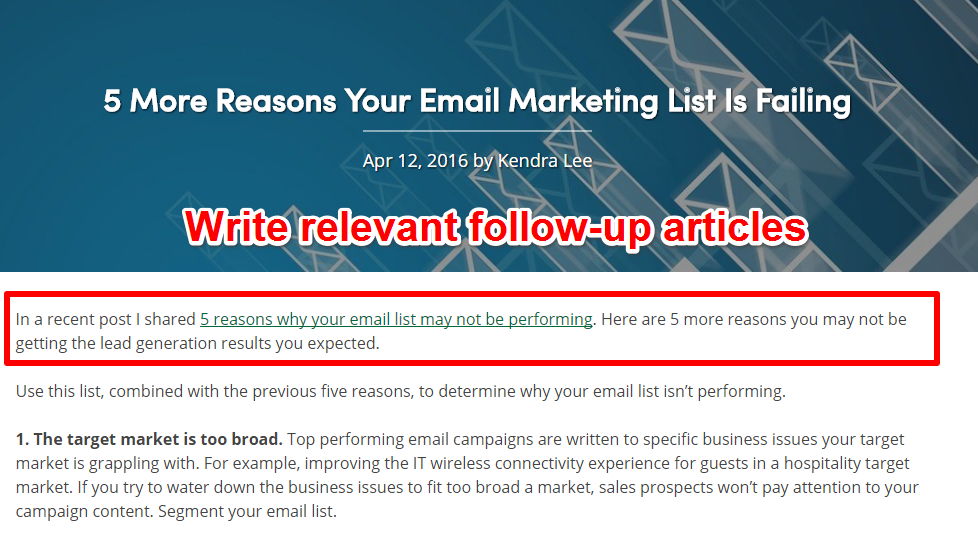
9. Create A Slide Deck & Upload To SlideShare to Reach New Audience
You can turn your content into a slide deck presentation and upload it to sites like SlideShare. The site allows you to search slide decks both by topic and user, giving uploaders the benefit of a “channel”-like fame. Despite the general feeling of “death-by-powerpoint” in class and corporate settings, going through a presentation on your own can be quite an entertaining prospect. It’s more engaging than a paper and more interactive than a video. Moreover, it allows you to impress the reader on more than content (think about how important design is and how much it can say about you).
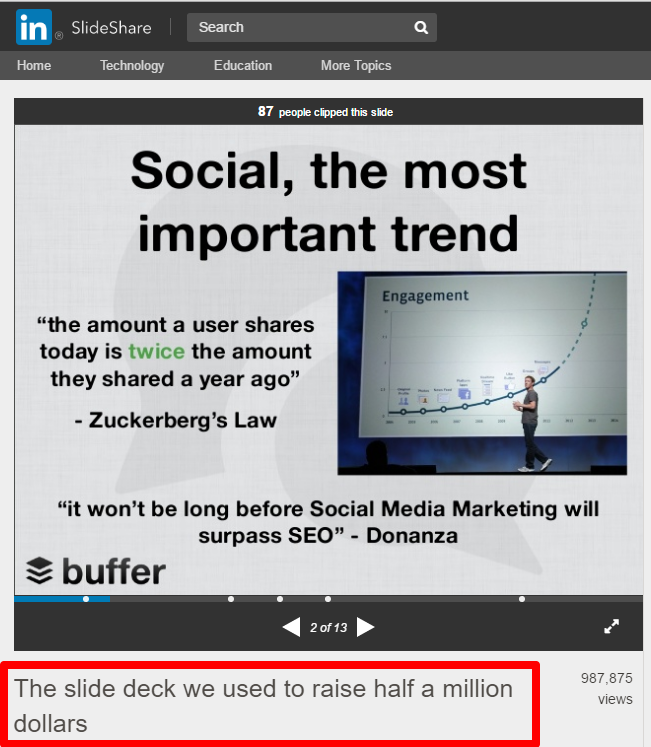
10. Build an Infographic to Make the Best Out of Your Old Content
Creating a good infographic can be quite challenging. It needs to show all the relevant information, do away with any redundant or useless data, make sense, have scientific validity while also catching the eye of the casual viewer by being both original and good-looking. In fact, it might be less difficult to gather the info you want to present to your audience than to design the way you’re going to present it. But it might be worth the price of admission: a well-crafted infographic will be shared, liked, commented, shared, included in mainstream publications, shared… you get the idea. Besides, you don’t have to start from scratch or have a team of wiz-designers, as there’s plenty of templates and tools to go around if you’re just starting out.

11. Put Your Current Content Together Into an E-book
When you’ve published content for long enough, you might think that you’ve got enough material there for a book. And that might just be true. So if that’s the case, why not actually create a book, or rather an e-book? There are advantages to an e-book both for you and for your readers. As a publisher, an e-book offers you tremendous flexibility and variety in terms of structure and design, allowing you to come up with an absolutely unique product. As a reader, an e-book is easy to carry and easy to access (whether it’s on a laptop, tablet, mobile or e-reader). It also doesn’t take up too much space (if any at all), you can easily navigate between chapters and sections, as well as highlight or bookmark paragraphs or pages.

12. Write Guest Posts on Topics You Already Have Expertise On
Being knowledgeable on a topic means you are no longer confined to just your own soapbox, but you can jump on others’ as well (at least for a short while). Once you have enough expertise on a topic or niche, you might have what it takes to write guest posts for other people, who might have entirely different audiences than you have. There are plenty of websites that allow for guest posting and quite a few pieces of advice on how to do it successfully and get the most out of it (we wrote about it ourselves in the past).
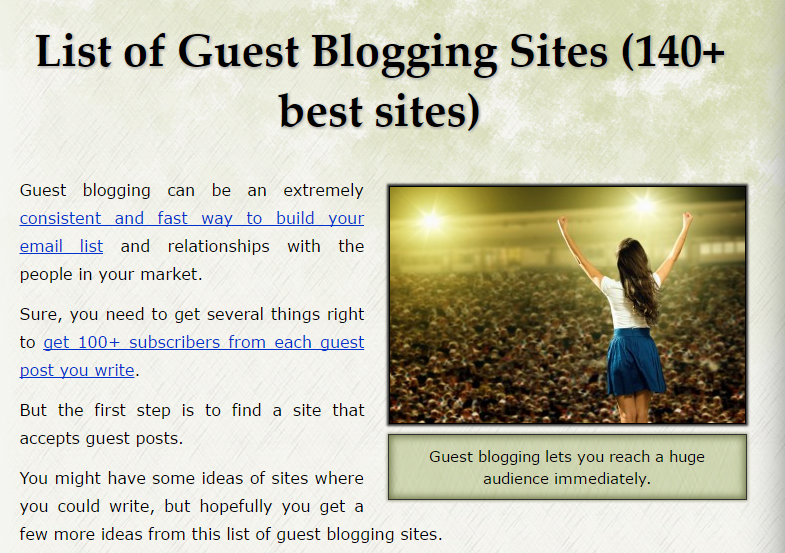
13. Promote Your Existing Blog Posts from Multiple Points of View
This one is pure marketing at its best. The modern-day culture equivalent of this would be the recent trend of having multiple teasers and trailers for a movie. Which is pretty much what you’d be doing: selling your post from multiple points of view (and for multiple audiences, potentially). Of course, in order for this to work well, it might be helpful if your 5, 7 or however many tips covered a fair amount of ground. This way, you can be sure that when you’re sharing a different image and a different tip every day, you might pull in a different crowd. People love variety in lists, because it means that if they don’t like one suggestion from your list, there’s a lot of other ones they can try.
14. Turn Your Existing Content into Videos
Ours is a culture that has increasingly turned from reading to visual. This is apparent not just from the tremendous amount of video content uploaded each day to YouTube and other similar sites, but also from the pervasiveness of video content on pretty much every other platform that’s not dedicated to video management (such as websites, blogs, social networking sites, etc.) That’s where the great advantage of turning written content into a video lies. A written post tends to signal effort, saying “Hi, you’ll need about 5 minutes to read me, 10 if you’re tired”. A video doesn’t say anything, it just gives you no warning. Especially on mobile Facebook, videos are just meant to start running as you scroll down. If something catches your eye, you’re likely to watch it until the end, even if you wouldn’t have clicked on it otherwise.

15. Conduct Podcasts with Industry Leaders Following Themes You Are Already Familiar with
The most important elements that can influence the success of a Podcast are not necessarily related to what you say. Not because content is irrelevant (it totally is), but because the responsibility of providing said content does not need to rest solely on your shoulders. In fact, you can build a sustainable strategy based mostly (or entirely) on interviews, whether it’s with authors, musicians, comedians or any other type of expert. So if you don’t feel confident enough to dispense advice of your own, why not try to get industry leaders to give it? It requires an entirely different set of skills, but it also comes with some built-in advantages (like the fact that industry leaders already like to talk about how and why they’re industry leaders, so you’ve got half of your work cut out for you).
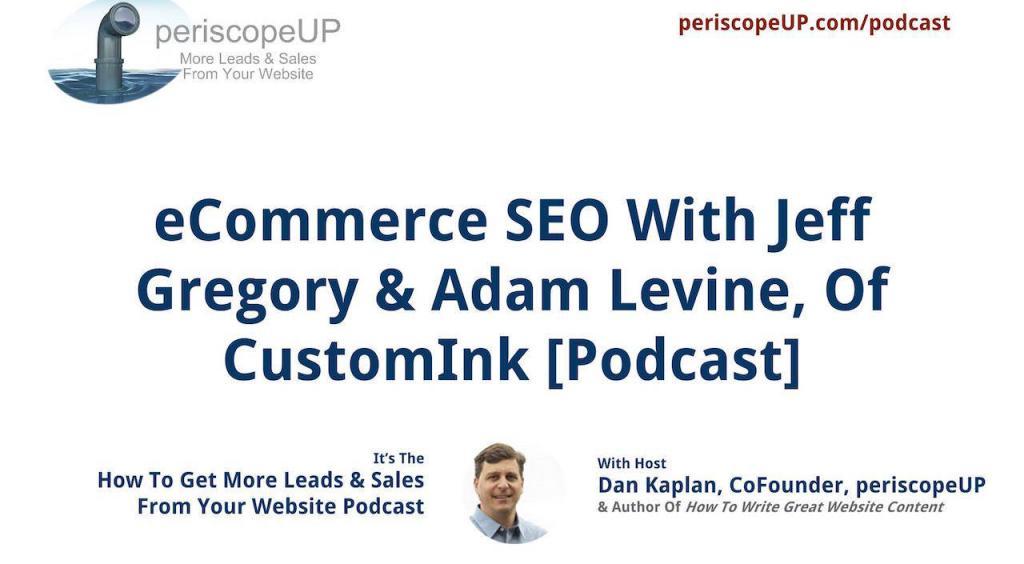
16. Compile Your Clients’ Questions from Support into an FAQ Page
FAQs are seriously underrated. They represent compilations of useful information which has been statistically proven to come in hand. How could you not be interested in that? As with pretty much every other example in this list, there are rules to how to create good FAQs, both in terms of content and structure and in terms of design.

17. Pull out the Best Questions You Get on Support and Turn Them into Individual Blog Posts
If you’re running into writer’s block, let your audience be your muse. With experience and knowledge you gain not just information but also a certain way of thinking about things. Which means you also lose a certain way of thinking about them – a more naive, but very likely original one. So it should be no surprise that some of most interesting questions you will try to answer will come from your readers, people who are counting on your help to further their knowledge. Of course, there are many websites out there which bring people together and which can be used to get answers to one’s burning questions. But nothing beats keeping a personal relationship with your readers and trying to find an answer even when you don’t know what it might be beforehand (Randall Munroe of xkcd fame made quite a lucrative blog out of this ). Besides, if your readers themselves have blogs or websites, turning one of their questions into a full post might yield a significant amount of good-will in terms of relationship building.

18. Convert the Testimonials from your Users into Quality Content
Sure, we know what you’re thinking. But we’re not really suggesting this to feed your ego. That’s the obvious perk of using testimonials that everyone notices. But there’s another, more reader-oriented use for them. See, when you’re saying something, you’re talking as the Creator (not The Creator, but rather the creator of a product, of a post, of a website). Your readers are most likely reading what you say as Users. And regardless of how considerate you are, there will always be an imperceptible gap between Creator and Users. There’s something in the way Users learn from their peers that can’t be matched by the traditional interaction. Seeing someone else who’s just like me using your product and being successful is likely going to be more effective than all the data in the world. Of course, you can’t just throw people’s words out there and hope they will inspire, you have to pay attention to how and when you do it and always try to stay true to the original message, as it was written/recorded.
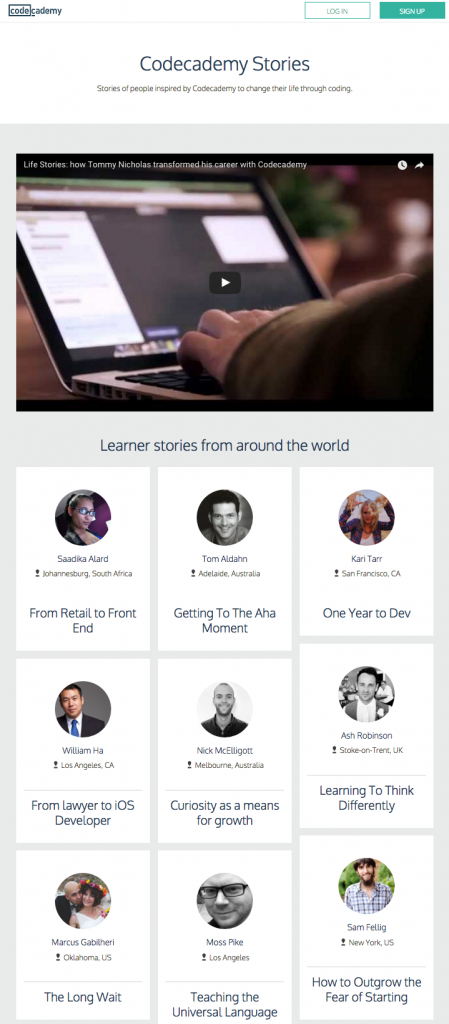
19. Make Use of Your Clients’ Photos or Videos Using Your Product
This is an even more powerful variation on the testimonial. It’s also a bit removed from the testimonial, as it can be less of a proactive initiative, and more of a fair exchange. That being said, it’s still a true message. You’re not asking your clients to make up things, or pretend they like your product when they really don’t. It can be a video that they themselves come up with, or something you’re putting together and they just agree to show in it. Either way, the customers’ presence in the video needs to feel real and honest. It might even be more persuasive if the experience shown is not 100% positive (maybe they had a difficulty in the beginning, but they overcame it, or maybe they didn’t know how to use a functionality, but your customer support provided a solution).
20. Mix Your Blog Posts Into Valuable Online Courses
All content can be educational, but depending on the form in which it is presented, some instances are more effective than others (and they usually involve making learning an active process where the learner has goals and incentives to achieve them). With a little bit of editing effort and some understanding of the psychology of learning, you could take existing interviews, blog posts, Q&As etc. and turn them into a series of (short) online courses. Sure, the market for online learning platforms has exploded over the last few years, but there’s still uncovered ground, either in terms of content or in terms of method. Most learning platforms integrate one or more learning methods, but few can integrate all. So one solution would be to look around and see what’s missing. Is it the content you have? A certain level of interactivity? The opinions and advice of industry experts? Find what others are missing and turn it into your selling point. There’s more to learning than reading and you can put your content to good use by giving it the training treatment.
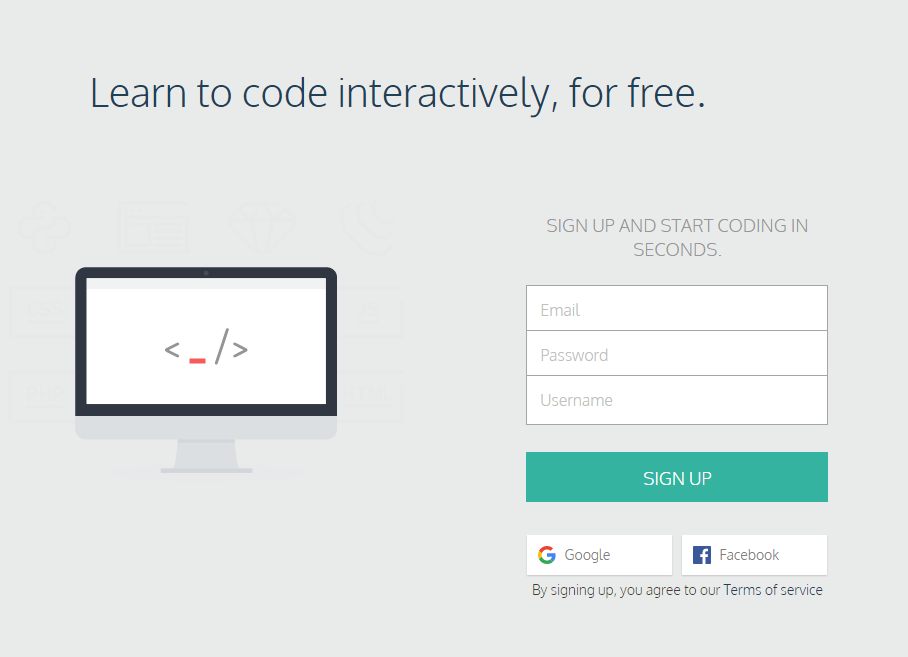
21. Share the Best of Your Content via a Newsletter
It might seem like a thing of the past, but the newsletter seems to be making a comeback. The main question this time is “How do we make an e-mail newsletter that people actually read?” The answer is quite complex and involves more than relevant content and good design (though these are absolutely crucial ). There’s a lot of strategy involved, in terms of who to target and how to make people willingly sign up for a newsletter, instead of being stuck with it, figuring out what your news should actually be about, but also taking a leap of faith and making the “Unsubscribe” option visible, because your readers’ comfort is more important than your numbers.

22. Pull out Quotes as Micro Content Promotable to Your Target Audiences
The Internet loves quotes. More than statistics, videos or clickbait articles, and possibly second only to cats. In fact, the online love for quotes is so pervasive John Oliver even devoted a segment to them, dubbing them “the karaoke of ideas.” Of course, his segment served as a cautionary tale of the many ways in which quotations can be misattributed and many times even, well, misquoted. But their like-ability and share-ability is undeniable. It could be a counter-intuitive statistic, a poignant advice that is backed up by experience, or an insightful conclusion of an in-depth analysis. Of course, the challenge is to created a quote that’s both unique and memorable and that’s no easy feat.
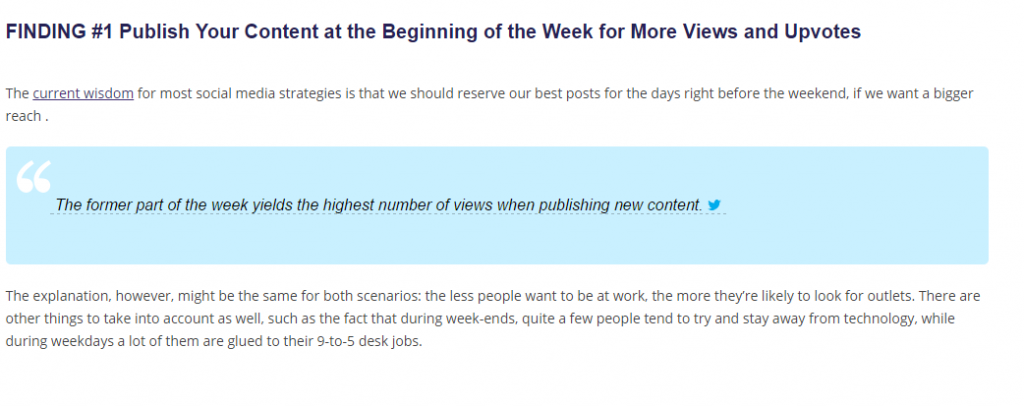
23. Break up Long Articles into a Series of Shorter Blog Posts
There’s quite a bit more work involved in publishing an article in a notable publication than on your blog or website. So it often happens that what you end up with is, if not a bigger article, at the very least a lot more research and analysis. You don’t have to let all of that go to waste. You can break down all of that into a series of smaller blog posts. This way you win by having material for more than one update and the readers win by being able to digest your data piecemeal (as the length of an article can often be a deterrent to many who might find the topic interesting). Of course, this means you need to pay more attention to linking, but overall it’s worth the effort.
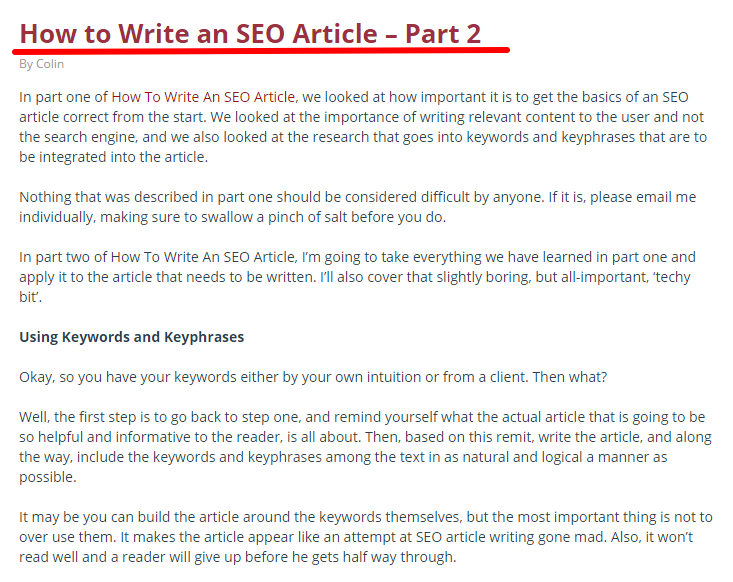
24. Have Your Content Syndicated and Win Quality Traffic and Authority
Long story short, content syndication is when a piece of content from your own blog is featured on a popular site from your niche. Danny Brown offered a great analogy for a better understanding: “For most local journalists, your stories are mainly read by the local township. There’s nothing wrong with this, and it’s a solid enough career. However, now and again you might write a human interest story that gets picked up by the nationals, and your piece is quoted in the New York Times or on CNN.”
Talking about your blog, you obviously have your well determined niche and fan basis. Yet, imagine how great it would be to have an audience thousands of times bigger than yours for your great articles? The sky is the limit.
However, how do you syndicate your content? How should your content look like to be taken over by highly influential publications? You might need to work a bit in this direction to figure out the best strategies, yet, it’s worth investing efforts in it.
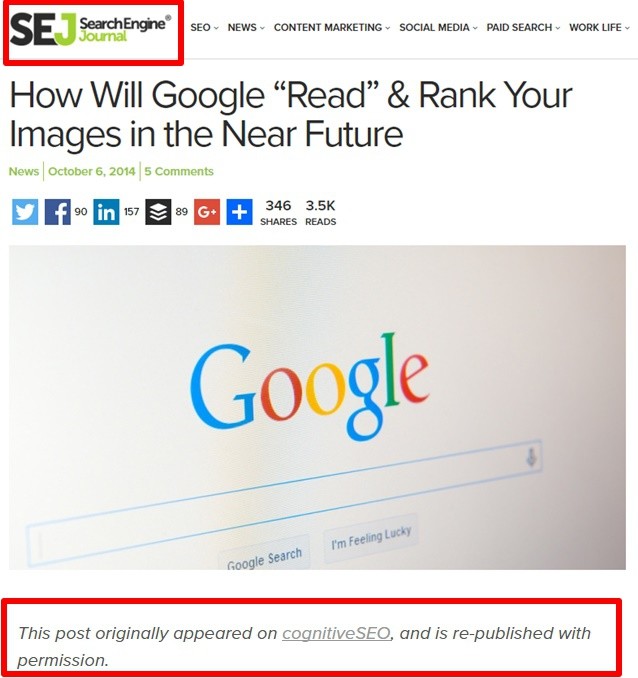
25. Build and Share Instructographic to Reach New Audience
Take an infographic, a how-to article or a step-by-step guide, combine them and what you’ll get will be the so-called instructographic. Therefore, an instructographic is a how-to article or step-by-step guide presented in an infographic packaging. How can this help you with repurposing content? Let’s say that you have a quite complex, well documented “how to guide” in written form. However, you also want this piece of content to be easy to visualize and share. An instructographic might do the trick.
Moreover, it’s not a widespread SEO tactic meaning that is not perceived as an abusing tactic by search engines (yet). Placing instructographics on social media or websites is easy to do, it will add value to product pages, generate buzz and, why not, some backlinks and, most importantly, it will help users. You can get inspired by on how to craft instructographics in order to best repurpose your content.
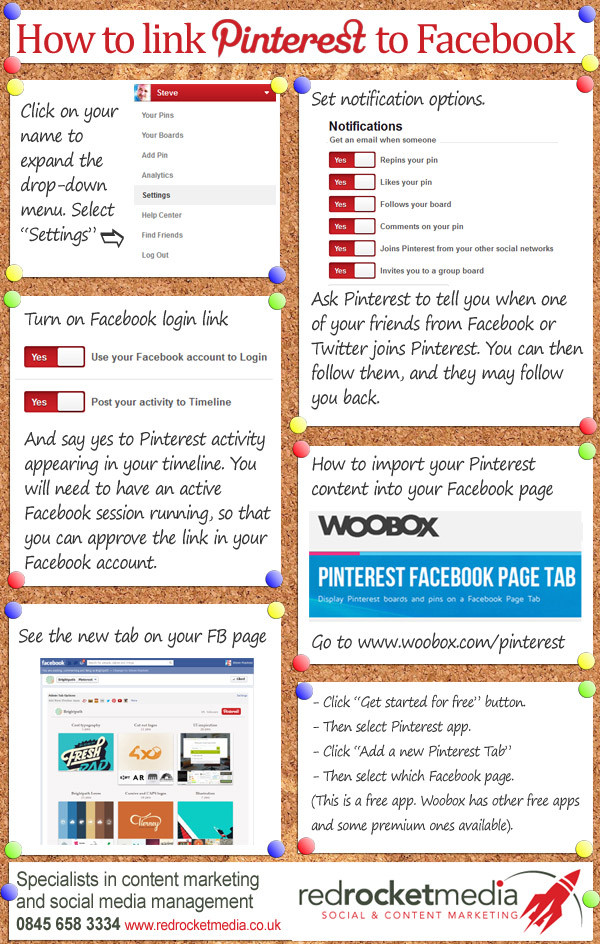
26. Transform Your Content into Valuable Email Series
I am sure that it happened more than once to look at all the content that you wrote, all the great tips, hacks, strategies shared with your users, and felt the need to make even more out of this content. Good content deserves to be repurposed. And great users (readers) deserve to be kept connected with their field of interest.
What you can do is take all that valuable content that is already documented and written by you and create a series of “how to” or “did you know” emails that your users can take advantage of. For instance, let’s say that you are a savvy individual in the digital marketing area and you write weekly content on a blog, letting your users know the latest news, tendencies or strategy from the market.
It would be more than great for your users to receive straight-to-the-point email series, with “tips and tricks” they could use in their digital marketing campaigns. And it’s a win-win situation: you are repurposing valuable content and your users are getting great insights in an easily “digestible” formula.
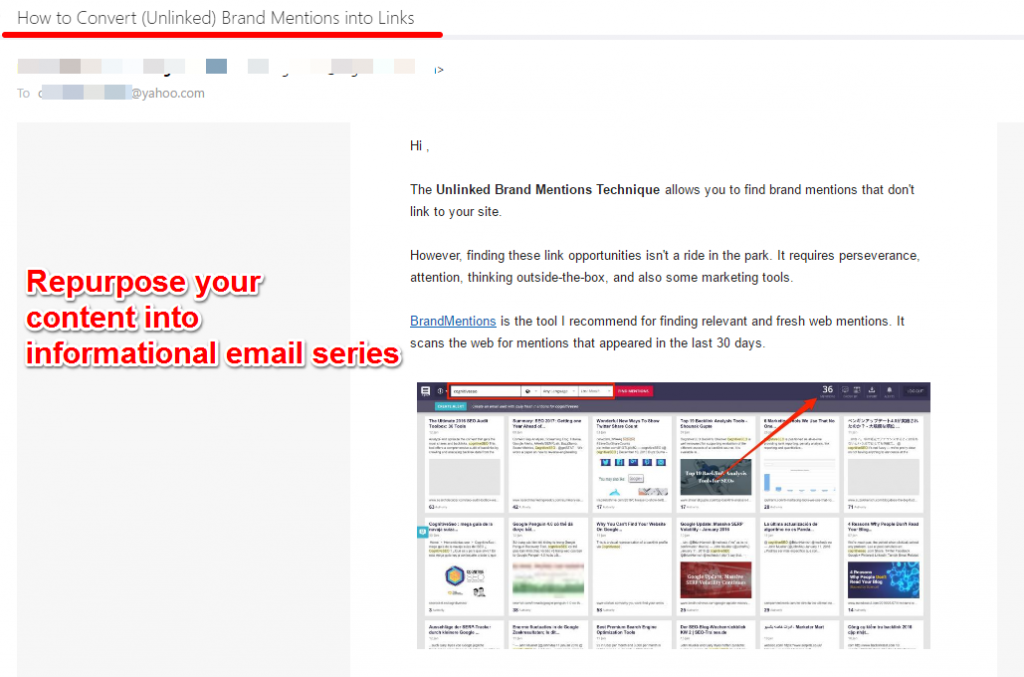
27. Turn Your Blog Post into a Webinar ( and vice-versa)
Throughout your blog you’ve probably discovered the content that your audience is most interested in. If so, why not repurposing that topic into a conversion-driving event, like a webinar? Turning your blog post into a webinar is not only a great way to repurpose content but also to generate leads.
A huge benefit of hosting a webinar is the feedback. Beforehand, you should ask your audience what topics they’d like to see discussed. During and after the webinar you should also invite as many questions as possible. These questions give you a feel for what your audience really cares about, and should give you plenty of ideas for content to blog about in the future.

Hope you’ll get the best out of these methods of repurposing content. If you know some more other great ways of repurposing content, just let us know in the comments.

 Site Explorer
Site Explorer Keyword tool
Keyword tool Google Algorithm Changes
Google Algorithm Changes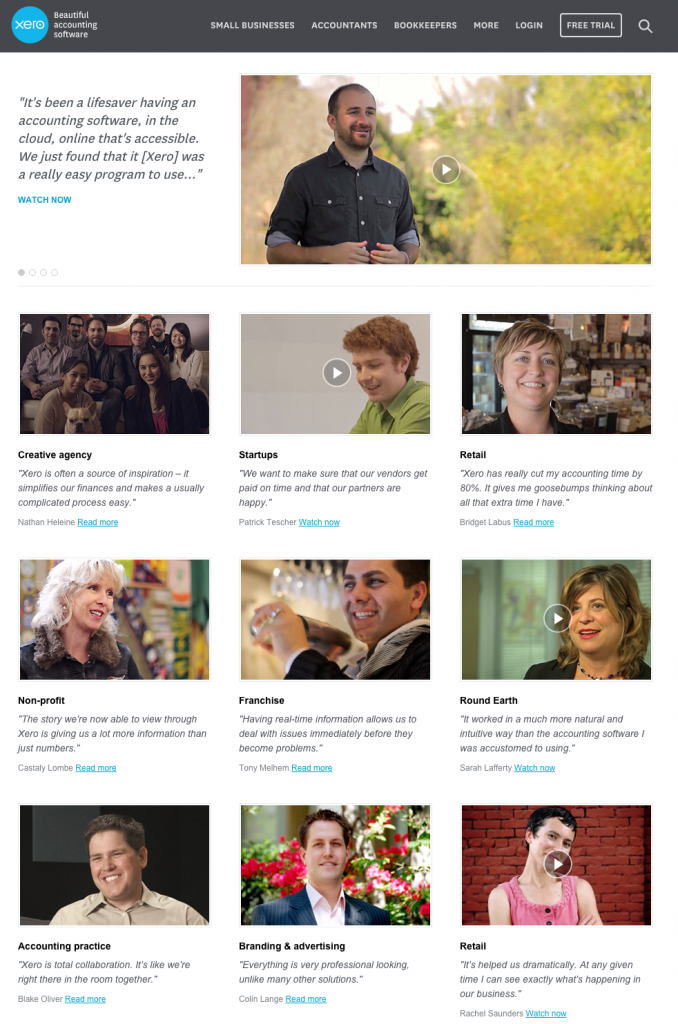


Informative article, Can use as a valuable resource.
Glad you find it useful 🙂
There’s an excellent continuity between a few of these tactics. One workflow you can follow is to gather images and use the most important points from your post to create a slide deck for SlideShare. Then you can screen record the presentation as you narrate over it to create a video. Take out the audio file, and now you’ve got a podcast episode too.
Thank you for this amazing information, it’s so much useful for me even as a beginner. Happy being your subscriber
This list is amazing! I’m a huge fan of repurposing content to get the most oomph out of every piece of work I do, but I was feeling stuck in a rut of doing the same things over and over again. This gave me some fresh ideas to implement 🙂